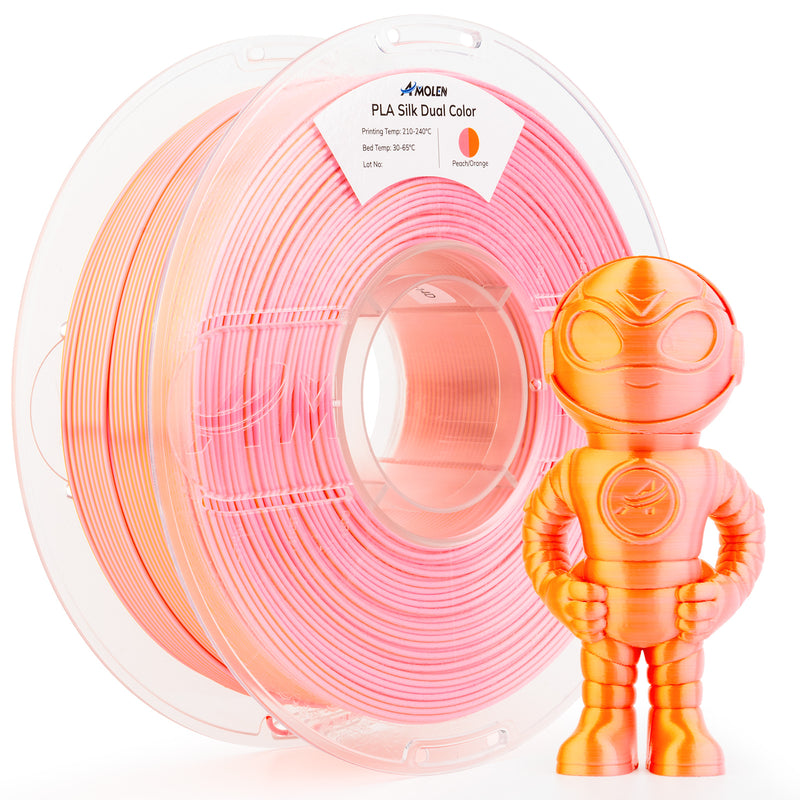Unlock the Secrets: Perfecting Your Ender 3 Prints with Silk PLA Like a Pro!
Silk PLA filament has taken the 3D printing community by storm, and it’s easy to see why. With its stunning sheen and vibrant colors, silk PLA offers a level of aesthetic appeal that can elevate any project, making it a favorite among enthusiasts and professionals alike. However, to achieve those glossy finishes and intricate details, optimizing your printer settings is essential. The Ender 3 has gained a reputation as a reliable workhorse for 3D printing, boasting excellent capabilities that cater to various filament types, including silk PLA. This guide will walk you through the optimal settings for using silk PLA on your Ender 3, ensuring you can produce prints that not only look great but also exhibit the quality and precision that you desire.

Understanding Silk PLA Filament
Silk PLA is a specialized variant of standard PLA that incorporates additives to enhance its appearance and printing characteristics. This filament stands out with its lustrous finish, resembling silk fabric, which is why it is so aptly named. Unlike regular PLA, silk PLA tends to have a smoother extrusion process and can produce prints with a more polished look. However, these unique properties also mean that silk PLA requires different settings to unlock its full potential. For instance, the filament’s tendency to string can be more pronounced than with standard PLA, necessitating careful adjustments in temperature and retraction settings. Understanding these differences is crucial for anyone looking to create stunning 3D prints with silk PLA.
Optimal Printer Settings for Silk PLA on Ender 3
To achieve the best results with silk PLA on your Ender 3, you’ll need to tweak several essential printer settings. Getting these settings right is the key to a successful print that showcases the filament’s unique characteristics. Here’s a step-by-step guide to configuring your Ender 3 for silk PLA:
Temperature Settings
The ideal nozzle temperature for silk PLA typically ranges between 190°C to 220°C. This range allows the filament to flow smoothly while ensuring that the colors remain vibrant and the finish glossy. It's essential to start at a lower temperature and gradually increase it if you experience issues with extrusion or adhesion. The bed temperature should be set between 50°C to 60°C, which helps with adhesion while preventing warping. Adjusting the temperature settings is crucial as they significantly impact print quality; too high can lead to oozing and stringing, while too low can result in poor layer adhesion.
Print Speed and Layer Height
Print speed and layer height are additional parameters that can influence the final results of your silk PLA prints. A slower print speed, around 30-50 mm/s, is recommended to enhance detail and reduce the chance of defects. Additionally, setting a layer height of 0.1mm to 0.2mm can yield smooth finishes and intricate details. My friend, who has been printing with silk PLA for some time, swears by a 0.12mm layer height for the best results. It’s all about finding the right balance that works for your specific printer and filament.
Tips for Successful Printing with Silk PLA
To take your silk PLA printing to the next level, consider these practical tips that can help you sidestep common issues:
- Avoid Stringing: Make sure to fine-tune your retraction settings. A retraction distance of around 4-6 mm and a retraction speed of 25-40 mm/s can help minimize stringing.
- Bed Adhesion: Use a heated bed and consider applying a thin layer of glue stick or painter’s tape to ensure your print sticks well.
- Post-Processing: If you encounter surface finish problems, lightly sanding the printed object can enhance its appearance. Additionally, applying a coat of clear spray can bring out the silkiness.
Experimenting with these tips can help you overcome challenges and achieve that stunning finish you’re after.
Mastering Silk PLA Printing on Your Ender 3
In conclusion, mastering silk PLA printing on the Ender 3 hinges on understanding the unique properties of the filament and adjusting your printer settings accordingly. From temperature and speed to practical tips for successful printing, this guide has equipped you with the knowledge needed to create beautiful 3D prints. I encourage you to experiment with different settings and share your experiences with the community. With a bit of practice and patience, you’ll soon be producing prints that truly shine with the elegance of silk.



